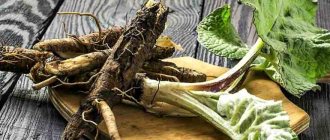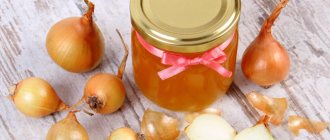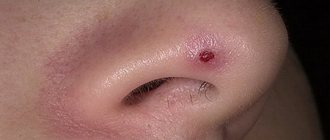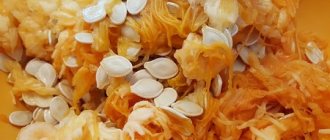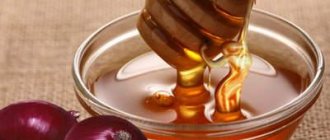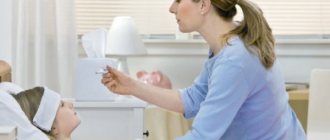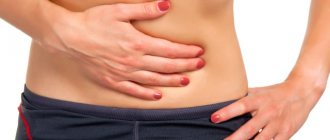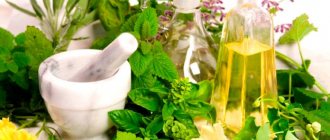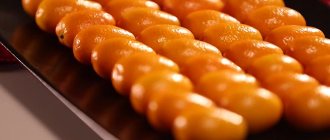Causes
There are many factors that cause urinary incontinence. To determine the method of treatment, it is necessary to identify the etiology of the disease, which includes the causes:
- emotional stress;
- the presence of inflammation of the pelvic organs;
- severe fear, prolonged state of stress;
- Every child adapts to life. It has been established that 90% of 8-year-old children cannot control urination at night;
- hereditary predisposition;
- heavy workload, watching horror movies at night;
- taking anticonvulsant medications;
- diabetes;
- sleeping in a cold room;
- allergic reaction.
Enuresis can affect children from the influence of several conditions, one condition can provoke another. A common reason for involuntary emptying of urine at night in the absence of disturbances can be deep sleep or consumption of a large amount of food or liquid right before bed, hypothermia.
Symptoms of the disease
So, enuresis is a disorder that is accompanied by urinary incontinence. In children, it is most often due to insufficient ability to master this skill, which is associated with their young age.
Enuresis is accompanied by involuntary and unconscious urination. Manifestations can occur both at night and during the day. The characteristic features of the manifestation establish the symptoms of the disease.
According to it, the disease is divided into the following types:
- primary – most common. It is determined when a child pees in bed when he is already fully grown (over 5 years old). In a good way, at this age the skill of urinary control should already be mastered. The primary form of enuresis is established in the absence of neurological or urological disorders in the patient, due to which urination is considered as a sign of the general clinical picture;
- secondary. The diagnosis is made when incontinence occurs after the child has successfully established the ability to control the process of emptying the bladder. The variant includes a similar picture of manifestation, in which the disease developed six months after full mastery of such a skill.
So, based on the prevailing stage of manifestation of the main symptom, daytime or nighttime enuresis is determined. In addition to urinary incontinence, they can manifest themselves in the form of sleep disturbances, nervousness, developmental delays, slow heartbeat, blue extremities, and low body temperature.
The disease can affect the central and autonomic nervous systems of the child. He becomes secretive, timid, depressed, withdrawn.
What is enuresis in children?
Enuresis is persistent involuntary urinary incontinence in a child over 5 years of age (nighttime, daytime, or combined). Nocturnal enuresis is urinary incontinence during sleep, at an age when a child is expected to fully develop a mechanism for controlling bladder function. Daytime enuresis is urinary incontinence while awake, suggesting neurogenic bladder dysfunction.
Experts identify the following main types of enuresis:
- primary (persistent), bedwetting, which occurs due to a delay in the formation of a physiological reflex (that is, the child has been peeing since childhood and always);
- secondary (acquired), developing as a result of numerous factors and manifesting itself at any time of the day (the formed conditioned reflex disintegrates);
- complicated, appearing against the background of serious somatic or mental illnesses (urogenital infections, diabetes mellitus, etc.);
- uncomplicated, in which there are no deviations from the norm in health and development;
- neurosis-like, developing as a result of a neuroinfection or a malformation of the intrauterine development of the child;
- neurotic, characteristic of children with an unstable nervous constitution and appearing in response to a stressful situation.
Enuresis is diagnosed according to the following criteria:
- frequency of involuntary or intentional urination occurs at least 2 times a month in children under 7 years of age;
- frequency of involuntary or intentional urination at least once a month in children over 7 years of age;
- duration of urinary incontinence more than 3 months;
- absence of objective reasons for urinary incontinence (developmental anomalies, psychopathology, etc.).
Principles of treatment
Therapeutic methods for eliminating enuresis involve the use of the following recipes:
- medicinal;
- physiotherapy;
- psychological;
- folk
The first three methods are prescribed only by a specialist. Parents should only follow the recommendations of the attending physician and try to facilitate the recovery process. To treat enuresis in children, adults can use folk remedies. Such additional therapy will significantly ease the physical and psychological condition of the baby, and will also speed up recovery.
After reaching the age of 5, the child is able to perceive everything said by adults. During this period, you can try to use the method of self-hypnosis. Come up with a common phrase that your child will repeat when going to bed. For example: “In the morning I will wake up in a dry bed” or “When I want to go to the toilet, I will wake up and call my mother.”
Daily routine matters to every child. It becomes especially important in the presence of enuresis. You should watch the child for several nights. Uncontrollable urination occurs at approximately the same time. Then you need to wake up the baby every night half an hour before the marked time and take him to the toilet.
Repeat the steps for two weeks, but shift the rise time by 10 minutes. Over time, the body will adapt and begin to “tolerate” for a longer time.
Traditional therapy
In combination with the therapy prescribed by the attending physician, with his approval, folk remedies are used in the treatment of enuresis in children at home. General strengthening procedures have proven themselves well.
- Air – microclimate for air baths: air temperature in the room 20°-22°C, humidity – 60-70%. The baby moves (walks, does light exercises) in a T-shirt and panties for 5-6 minutes, gradually increasing the time to 15-20 minutes. Do it in the first half of the day.
- Contrast foot baths - to carry out the procedure, water is poured into two basins in such an amount that it reaches the middle of the child’s calf muscle. In one basin the water temperature is 38°-40°C, in the other at the first sessions it is 4-5°C lower. The baby is placed in a basin with hot water for 1-2 minutes (he can stomp, walk, if space allows, flounder with his legs), then he is moved into a basin with cooler water for 10-20 seconds. The number of changes of hot and colder water is 6-8 times (up to 10).
After every 5 days of procedures, the water for the second (cool) basin is reduced by 1°C, bringing it to 12°-15°C. After the procedure, the feet are wiped well and socks are put on. It is advised to present the procedure in the form of an interesting story or fairy tale; the baby will be happy to take part in the action. The procedure is carried out until 4-5 o'clock in the afternoon.
- Contrast rubbing – if the baby is sick, you can apply a contrast rubbing of the legs using a special terry mitten moistened with hot and warm water, wipe the legs, changing the mittens, for 2-3 minutes.
- Contrast shower - used over the age of 2 years for general hardening of the body, improving the tone of the muscle and nervous systems, increasing resistance to diseases and infections, and improving metabolism. The procedure is recommended to be used before lunch, preferably in the morning.
These procedures should not tire the baby too much; in order to avoid overstimulation before bedtime, it is recommended to carry them out during the daytime. In case of increased emotionality, stress, and anxiety, take pine baths before bed.
- Pine baths: carried out 1 hour before bedtime, the child should not be hungry, but not full. The temperature of the water in the bath is 35°-36°C, the duration is from 7 to 10 minutes. The dosage of pine extract is 2 ml per 10 liters of water in a bath. Take a course of 20 baths every other day. During the procedure, it is recommended to remain calm in the water, without playing or swimming.
Throughout the day, the baby is given herbal teas, the last time given to drink no later than 2 hours before bedtime.
- Lingonberry leaf tea: brew a teaspoon of lingonberry leaf in a glass of boiling water. Give the baby 50-100 ml instead of tea, sweetened. The last dose of this tea is no later than 4 hours before bedtime.
- Morse from lingonberries and blueberries: cook compote or brew fresh, dry lingonberries and blueberries. Fresh berries take 2 tablespoons (half blueberries and lingonberries) per half liter of boiling water, dry berries - 1 teaspoon per glass (brew in a thermos for half an hour).
- Rosehip tea: in a thermos, infuse a tablespoon of dried fruit in 1 liter of boiling water for an hour (1), give 50-100 ml instead of tea.
- Anti-infectious yarrow tea: infuse the herb (2 teaspoons) in half a liter of boiling water in a thermos for 40 minutes. Take a pure infusion of 40-50 ml twice a day.
- Calendula infusion: infuse the flowers (1 teaspoon) in a thermos in a glass of just boiled water for a third of an hour, give 30-50 ml of the infusion in the morning on an empty stomach. Do not give for more than 7 days without a break.
- Red clover and mint tea: Brew tea from red clover inflorescences and mint leaves, taking 1 teaspoon of each component per liter of boiling water. Drink a quarter glass 2-3 times throughout the day before afternoon tea.
- Dill and medicinal chamomile tea: Prepared and used as in “Red Clover and Mint Tea.”
Folk recipes
Traditional medicines include the use of the following plants:
- Dill seeds. 1 tbsp. l. Pour a glass of boiling water over the seeds and leave to steep for an hour. Take in the morning on an empty stomach. Children under 10 – half a glass, and teenagers – a glass. Duration of admission – 10 days.
- Viburnum roots. 15 pieces of the plant, 10 cm long, are washed, poured with 2 liters of cold water, and put on fire. The mixture is brought to a boil, simmered over low heat for 45 minutes, then infused and filtered. Take the resulting drink warm, ½ glass three times a day. You can add a little honey.
- Lingonberry leaves. ½ cup of the plant is poured with 500 ml of water, boiled for 7 minutes, left for 40 minutes, filtered. Drink a glass of the resulting drink before meals three times a day. The course of treatment is one month.
- Birch buds. 1 tbsp. l. crushed plant is poured with 1.5 tbsp. hot water, cook for 5 minutes over low heat with the lid on. Then remove from heat, wrap well, leave for 1 hour, then filter. Drink 1⁄2 cup three times a day half an hour before meals.
- Plantain leaves. 20 g of the dried plant is poured into a glass of hot water, infused, and filtered. Drink the resulting drink three times a day.
- Honey. Give your child a teaspoon before bedtime. The product has a relaxing effect and reduces the load on the kidneys. The dosage cannot be increased. Over time it can be reduced. The method is prohibited if you are allergic to honey.
- Yarrow, thyme. Equal parts of dried herbs should be brewed into tea form. Give the baby 1 tbsp three times a day. l.
- Herbal mixture, including 1 tsp. pour hawthorn, mint, horsetail into a thermos. Pour 0.5 liters of hot water and leave to steep overnight. Take ¼ cup 30 minutes before meals.
There are many folk remedies for the treatment of enuresis in children. You should consult your doctor before using them.
Folk remedies for enuresis in girls
All of the above methods and means are suitable not only for boys, but also for girls. Further, we also complement the methods and recipes, which also belong to proven and effective means.
Treatment with a simple alarm clock.
The treatment effect is approximately 75%. Here you will have to wake up your child before enuresis occurs. After this, the correct reflex is usually developed, which allows you to prevent the loss of urine when the alarm goes off.
Correct conditions.
- Do not interrupt treatment that has begun.
- Completely coordinate your treatment with your doctor.
- The parent sleeps next to the child.
- The effect occurs after 7 weeks.
Even after this, continue this treatment until the bed becomes dry for at least 10 calendar days. Every about 4 days, set your alarm clock about 20 minutes ahead. Do this until your wake-up time is around 7 am.
Arable clover.
First, check the reaction to clover. Apply the tincture behind the ear, elbow and wrist. With a normal reaction, the skin will remain the same color, but if the skin turns red, then it would be advisable to refuse treatment with clover.
If it is not possible to prepare the tincture yourself, then ask for a ready-made mixture at any pharmacy. Making the necessary tincture yourself will not be difficult.
The clover grass (1 tsp) is poured with clean boiling water. Then just add sugar and drink like regular tea. This tincture has helped many children cure enuresis.
Honey water.
Honey is a multifunctional natural remedy that can be used in the treatment of urinary incontinence using folk remedies. For enuresis and its prevention, the child should receive honey water before going to bed. In a mug of water, add just ½ tsp of honey. Or 30 ml 3 times a day.
Treat like this for about a whole week, no longer necessary. If you notice noticeable changes, then take a course of 50 calendar days with tinctures containing honey (for example, chamomile, St. John's wort, birch leaves, mint and others).
Using any of the herbs listed, prepare your own natural mixture. For 15 grams of herb you need a glass of boiling water. Let everything brew well (about 10 hours), and then strain well. Honey is added before use.
Plantain.
For effective results, it is best to use seeds that must be ground into a fine powder. Take no more than 4 r per day, exactly 2 g (at the tip of a knife). If an adult has enuresis, then combine these seeds with wine, always dry, no more than 30 ml.
Cowberry.
This is the most popular natural way to treat enuresis. Select clean lingonberry leaves to fill the glass halfway. Pour the leaves into boiling water (0.5 liters), boil for at least another 5 minutes and strain after an hour. The course should last 30 calendar days, 3 times a day, 1 glass.
Now many people (mostly parents) know how to get rid of enuresis using folk remedies. But before using any natural remedy, be sure to get your doctor’s approval. If he allows it, then boldly and without any fear, begin treating enuresis in children.
Many parents already know their proven remedy. Please post it in the comments so other people can use it. Or simply distribute the article on your page. To do this, just click the button (icon) just below.
Get healthy and share natural healing recipes.
The benefits of traditional methods
The use of natural medicine requires certain labor costs to prepare the necessary recipes. However, folk recipes have the following beneficial properties:
- many years of time-tested experience;
- pure recipe ingredients without chemical additives;
- provide gentle treatment, affecting the body safely;
- almost complete absence of contraindications;
- minimal number of side effects.
In addition, the therapeutic effect is accompanied by general vitaminization of the body.
